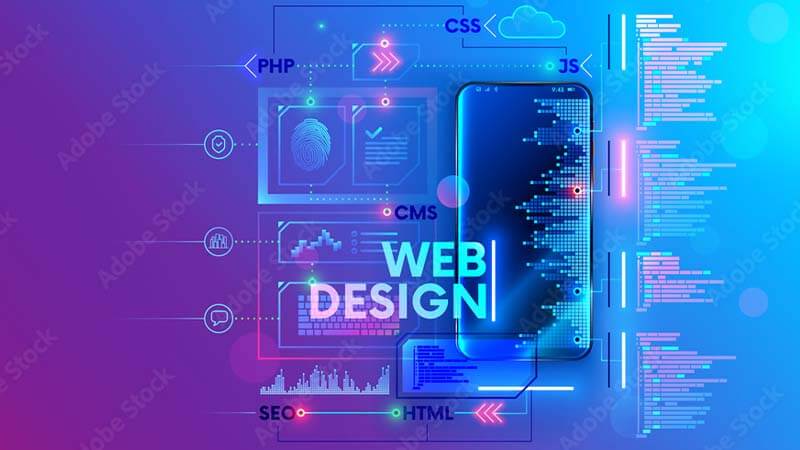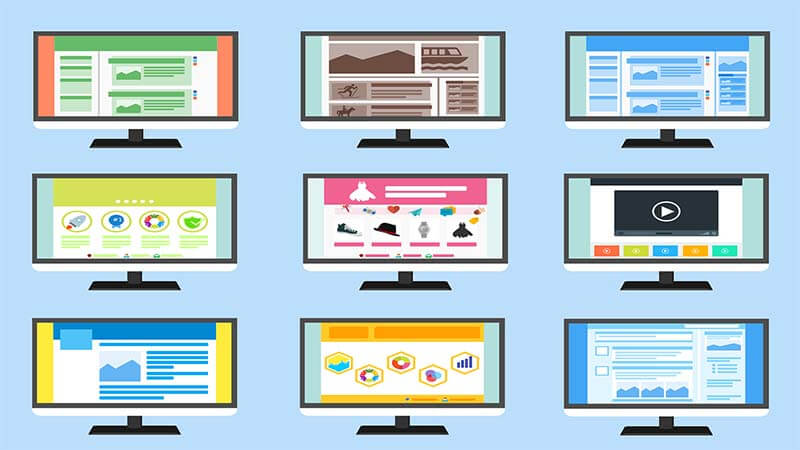Redesigning a website is more than just updating its look. Website redesign goals focus on improving user experience, boosting engagement, and enhancing functionality. These goals help create a site that reflects the brand, is easy to navigate, and converts visitors into customers. A successful redesign ensures that the website meets both the needs of the business and its users.
What is The Goal of Redesigning a Website?
The main goal of redesigning a website is to improve its performance and appeal. A website redesign makes the site more user-friendly, visually attractive, and faster. A redesign website process also helps in aligning the site with current trends and technologies. When you redesign a website, you aim to enhance the user experience, increase engagement, and drive more conversions. The ultimate goal is to align the site with the brand’s objectives and user needs.
Is Redesigning a Website Necessary?

Yes, redesigning a website is often necessary to keep up with changing trends and user expectations. Businesses may have various websites to redesign to stay competitive and relevant. The need to redesign the website often arises from outdated design, poor user experience, or slow loading times.
However, a redesign of website can help achieve multiple website goals, such as improving user engagement, enhancing site speed, and boosting conversions. The primary goal of website redesigning is to ensure that it meets the current goals for website performance and user satisfaction. Effective website redesigning focuses on aligning the goals of a website with business objectives and market demands.
Related: 6 Basic Elements of Effective Web Design
What Should be the Goals to Redesign Your Website?

When you redesign your website, the goals should focus on enhancing user experience, increasing conversion rates, and improving overall performance. Prioritizing mobile responsiveness, brand identity, and SEO optimization ensures your site meets both business and user needs. These goals create a website that is visually appealing, functional, and aligned with your objectives.
Let’s learn the main goals when we redesign a website.
1. Enhance User Experience
One of the primary goals of a website redesign is to enhance the overall user experience. This involves making the site easier to navigate, visually appealing, and quick to load. Improving the layout, simplifying the menu structure, and ensuring content is easy to find can help achieve these goals. A better user experience leads to higher engagement, lower bounce rates, and improved visitor satisfaction.
2. Increase Conversion Rates
A key goal when you redesign your website should be to boost conversion rates. This means encouraging more visitors to take desired actions, such as signing up for newsletters, filling out contact forms, or making purchases. Optimizing call-to-action buttons, improving landing pages, and ensuring a seamless checkout process can significantly increase conversions. Aligning the design with your audience’s preferences will also help in achieving this goal.
3. Improve Mobile Responsiveness
With more users accessing sites via mobile devices, improving mobile responsiveness should be a top website redesign goal. Ensure your site works well across all devices, including smartphones and tablets. A responsive design automatically adjusts to different screen sizes, providing an optimal viewing experience. This not only enhances user experience but also helps improve your site’s search engine ranking.
4. Strengthen Brand Identity
A website redesign is an opportunity to strengthen your brand identity. The site should reflect your brand’s values, tone, and style consistently. Updating the logo, color scheme, typography, and imagery to align with current branding helps create a cohesive and memorable experience. A strong brand presence can build trust with visitors and make your business stand out from competitors.
5. Optimize for SEO and Performance
Another crucial goal is to optimize the website for search engines (SEO) and performance. A redesign offers the chance to improve site speed, update outdated content, and incorporate relevant keywords. Optimizing images, compressing files, and ensuring the site is mobile-friendly are essential for SEO. An SEO-optimized site ranks higher on search engine results, driving more organic traffic.
6. Improve Accessibility and Compliance
Making your website more accessible to all users, including those with disabilities, should be a priority. This can involve adding alt text to images, using accessible color contrasts, and providing text alternatives for multimedia content. Compliance with accessibility standards, such as the Web Content Accessibility Guidelines (WCAG), can help you reach a broader audience and ensure your site is inclusive.
7. Leverage Data and Analytics
Use data and analytics to set measurable goals for your website redesign. Analyzing current performance metrics like bounce rate, time on page, and conversion rates can highlight areas that need improvement. Establish clear benchmarks to measure the success of the redesign. This data-driven approach helps refine strategies and continuously improve the site based on user behavior.
By setting these goals when you redesign your website, you can ensure that the new site is more effective, engaging, and aligned with your business objectives.
Read More:
7 Critical Website Redesign Tips
When setting website redesign goals, it’s important to focus on the right areas. Here are 7 crucial tips for setting effective website redesign goals:
- Set Measurable Goals: Define clear, trackable goals to assess the success of your website redesign over time.
- Improve User Experience: Focus on making the website easy to navigate and user-friendly.
- Ensure Mobile-Friendliness: Optimize the site for mobile devices to cater to a growing number of mobile users.
- Align with Brand Identity: Ensure the redesign reflects your brand’s voice and visual identity consistently.
- Optimize for SEO: Incorporate SEO best practices to increase visibility and attract more organic traffic.
- Boost Conversion Rates: Enhance calls to action and landing pages to encourage more visitors to take action.
- Improve Site Speed: Ensure faster load times, as slow websites lead to higher bounce rates.
Keep your eyes on the crucial factors when you are trying to redesign your site, your purpose must be successful. So, you cannot ignore the tips of the redesigning of a website.
What is the Purpose to Redesign Your Website?

The purpose of redesigning your website is to improve user experience, boost engagement, and align it with your current business goals. A fresh, updated design helps attract visitors, increase conversions, and stay competitive in a dynamic market.
What is Website Redesign
A website redesign involves making significant changes to the structure, design, and content of a site to improve its performance. The main purpose is to create a more effective, user-friendly experience that aligns with the current website goal. A redesign is not just about changing colors or fonts; it’s about restructuring the site to make it more engaging, faster, and aligned with user expectations.
Analyzing Before and After Website Design
It’s important to evaluate the before and after website design to see what improvements have been made. Compare key metrics like load times, conversion rates, and bounce rates. The goal is to identify which changes worked and which didn’t. This helps in understanding how effective the redesign has been and what could be improved further.
Steps on How to Start a Website Redesign
When considering how to start a website redesign, the first step is to set clear objectives. Define what you want to achieve with the redesign. Next, analyze the existing site to understand its strengths and weaknesses. Use these insights to set your website redesign objectives. Prioritize elements like navigation, mobile responsiveness, and page speed to create a strategy that meets these goals.
Generating Effective Website Redesign Ideas
Coming up with fresh website redesign ideas is crucial for making the site more engaging. Think about enhancing the user experience by making the design clean and intuitive. Incorporate modern features like interactive elements or a responsive layout. Focus on a homepage redesign that grabs attention and guides users to the most important content. Use visuals and clear calls to action to encourage visitors to explore further.
Best Practices on How to Approach Website Redesign
Knowing how to approach website redesign is key to a successful project. Start with a clear plan that aligns with the business’s website goal. Break down the project into manageable steps, like designing the layout, updating the content, and testing for functionality. Consider a website reconstruction if the site is outdated or poorly structured. This involves a complete overhaul to make the site perform better and look more modern.
Importance of Redesign Homepage
The redesign homepage is often the most important part of a website redesign. The homepage is the first impression visitors get, so it should be inviting and informative. Focus on making it visually appealing, easy to navigate, and aligned with the overall brand identity. Highlight key products, services, or content that you want visitors to see first. A well-designed homepage sets the tone for the rest of the site.
By understanding these steps and focusing on the right elements, you can ensure that your website redesign meets your objectives and improves the overall user experience.
How to Redesign a Website?

To redesign a website, start by identifying the key goals for the project. Think about what the website should achieve, like better user engagement or higher conversions. This is where defining website goals and objectives comes in. List out the primary website objectives and goals to create a clear roadmap for the redesign.
The next step is to plan the website redesign process carefully. Begin with analyzing the current site to find what works and what doesn’t. Understand the website redesign requirements such as new features, improved content, or enhanced navigation. This helps in knowing what needs to change and what to keep.
A solid website redesign strategy is vital for success. Focus on creating a user-friendly design that aligns with the website goals and objectives. Think about the user experience, site speed, and accessibility. Make sure the new design reflects the brand’s voice and values. Consider using website goals examples to benchmark your progress.
To make your strategy more effective, use examples of website goals that match your business type. Whether it’s increasing traffic, reducing bounce rates, or boosting sales, having a website goals and objectives sample helps in setting measurable targets. Clear objectives will guide every stage of the redesign process and ensure you are on the right track.
Lastly, always review the website redesigns from the user’s perspective. Test the new design for usability, functionality, and performance. Make sure it meets all the website redesign requirements. Adjust and optimize as needed to meet both the website objectives and goals and deliver a great user experience.
How BoomDevs Can Help You
At BoomDevs, we specialize in crafting tailored website redesigns that align with your specific goals and objectives. Our team of experts focuses on enhancing user experience, optimizing for SEO, and creating a visually appealing design that reflects your brand’s identity. Whether you need a complete overhaul or a targeted update, we provide end-to-end solutions that drive results and keep your website competitive.
Are You Ready to Discuss Your Project?
If you’re ready to take the next step and bring your website redesign goals to life, BoomDevs is here to help. Let’s collaborate to create a powerful, user-friendly website that meets your business needs and exceeds your expectations. Contact us today to discuss your project and start your journey towards a more effective online presence.
Want to Talk about your Project?
Get a Quote.
Frequently Asked Questions:
Q1: How Often Should You Redesign Your Website?
A1: The frequency of a website redesign depends on several factors, including industry trends, technology updates, and changes in business goals. Typically, a website should be reviewed for a redesign every 2-3 years to ensure it remains modern, user-friendly, and aligned with current objectives.
Q2: What Are the Signs That Your Website Needs a Redesign?
A2: Key signs that indicate the need for a website redesign include outdated design, slow loading times, poor mobile responsiveness, low conversion rates, and a high bounce rate. Additionally, if your website no longer aligns with your brand or business goals, it’s time to consider a redesign.
Q3: What Are the Costs Involved in Redesigning a Website?
A3: The costs of redesigning a website vary depending on its size, complexity, and the specific requirements of the project. Expenses can range from a few hundred dollars for minor updates to several thousand dollars for a complete overhaul, including design, development, and content creation.
Q4: How Long Does It Take to Redesign a Website?
A4: The time required to redesign a website depends on the project’s scope and complexity. A basic redesign may take 4-6 weeks, while a comprehensive overhaul could take 3-6 months or longer, especially if it involves custom development, content creation, and testing. Learn more.
Q5: What Are the Key Elements to Focus on During a Website Redesign?
A5: Key elements to focus on during a website redesign include user experience (UX), mobile responsiveness, SEO optimization, brand consistency, content quality, and website speed. Prioritizing these areas ensures a site that is functional, appealing, and aligned with your business goals.
Q6: How Can You Measure the Success of a Website Redesign?
A6: The success of a website redesign can be measured through key performance indicators (KPIs) such as traffic growth, conversion rates, bounce rates, page load times, and user engagement metrics. Analyzing these KPIs before and after the redesign helps determine the effectiveness of the changes.
Q7: What Are the Common Mistakes to Avoid When Redesigning a Website?
A7: Common mistakes to avoid in a website redesign include neglecting mobile optimization, ignoring SEO best practices, not setting clear goals, and failing to test the new design thoroughly. Avoiding these mistakes can help create a more effective and user-friendly website. Know more.
Wrapping Up:
In conclusion, setting clear website redesign goals is essential for creating a site that is engaging, user-friendly, and aligned with your business objectives. These goals help guide the entire redesign process, ensuring that every change enhances performance and meets user needs. A well-planned redesign not only improves user experience but also boosts conversions and strengthens your brand. Focusing on the right goals can make your website a powerful tool for growth.








